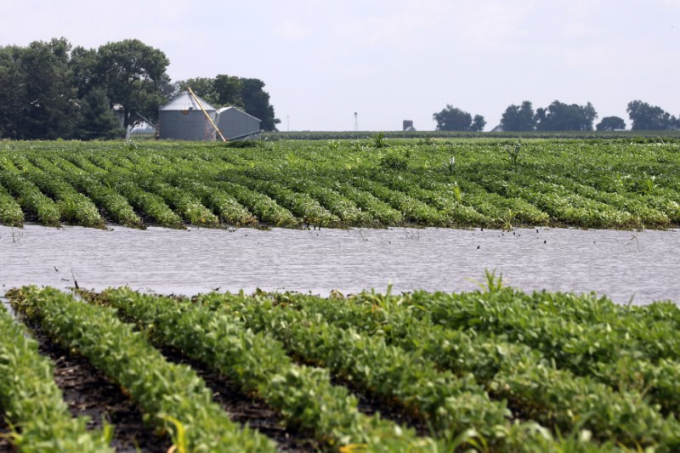May 23, 2025 | 01:31 GMT +7
May 23, 2025 | 01:31 GMT +7
Hotline: 0913.378.918
May 23, 2025 | 01:31 GMT +7
Hotline: 0913.378.918

The United States is headed for its largest corn harvest ever and its third-largest soybean crop, based on the USDA’s annual Acreage report, issued on Wednesday. The mammoth crops would be ready for harvest late this summer, replenishing U.S. grain inventories that are being drained by robust demand at home and abroad.
Corn and soybeans, the two most widely planted crops in the country, are the foundation of the U.S. food supply. They are fed to the cattle, hogs, and poultry that produce meat, eggs, and milk for Americans; used as ingredients in foods from breakfast cereal to salad dressing; and are central to a wide range of industrial applications, including as feedstocks for biofuels.
Farmers planted 2% more corn and 5% more soybean land this year than last year, said the USDA, which surveyed nearly 66,000 operators during the first two weeks of June, at the end of the spring planting season. Wheat plantings, while up 5%, were still the fourth lowest on record. Growers planted 11.7 million acres of cotton, down 3% from 2020.
If yields per acre match USDA projections, the corn crop would be nearly 15.2 billion bushels and soybeans, 4.4 billion bushels. The record corn crop was 15.148 billion bushels in 2016, the only crop to exceed 15 billion bushels. The biggest soybean crop, in 2018, was 4.428 billion bushels; second largest was 4.412 billion bushels in 2017.
The USDA’s estimates of 92.7 million acres of corn and 87.6 million acres of soybeans were smaller than anticipated by traders, who expected that high commodity prices this spring would lead to dramatically larger plantings. In the face of potentially smaller harvests, futures prices for new-crop corn spiked by the daily limit of 40¢ a bushel. Soybean contracts for delivery in November, when the new crop will be available, soared by 86 1/2¢ a bushel.
Earlier this month, the USDA projected that this year’s corn and soybean crops would fetch the highest average price at the farm gate in nearly a decade.
Drought is a threat to corn and soybeans in the upper Midwest. Three-fourths of Iowa, which is No. 1 in corn and No. 2 in soybeans, is in “moderate” or “severe” drought at present. Weather in July and August is key to crop yields.
“It’s becoming more likely that weather might be just good enough for corn and soybeans to produce about an average crop,” said Ray Grabowski of Progressive Ag Marketing.
July is forecast to be hotter than usual in most of the Midwest, as well as the West, New England, and the mid-Atlantic states, said the National Weather Service in a 30-day forecast issued on Wednesday. Rainfall during July was forecast to be below normal in the Pacific Northwest, the northern Plains, Minnesota, and most of Iowa and Wisconsin.
The USDA says the margin of error for its estimates of corn plantings is 1.8% and 3% for soybeans. The Acreage report tends to overstate corn plantings and underplay soybean acreage.
Also on Wednesday, the USDA’s quarterly Grain Stocks report said, as expected, that less corn, soybeans and wheat was being held in U.S. grain bins than on June 1 a year ago. The soybean stockpile fell 44%, and wheat and corn stockpiles were down 18% each.
(SF)

(VAN) Alt Carbon has raised $12 million in a seed round as it plans to scale its carbon dioxide removal work in the South Asian nation.

(VAN) Attempts to bring down the price of the Japanese staple have had little effect amid a cost-of-living crisis.

(VAN) Fourth most important food crop in peril as Latin America and Caribbean suffer from slow-onset climate disaster.

(VAN) Shifting market dynamics and the noise around new legislation has propelled Trouw Nutrition’s research around early life nutrition in poultry. Today, it continues to be a key area of research.

(VAN) India is concerned about its food security and the livelihoods of its farmers if more US food imports are allowed.

(VAN) FAO's Director-General emphasises the need to work together to transform agrifood systems.

(VAN) Europe is facing its worst outbreak of foot-and-mouth since the start of the century.